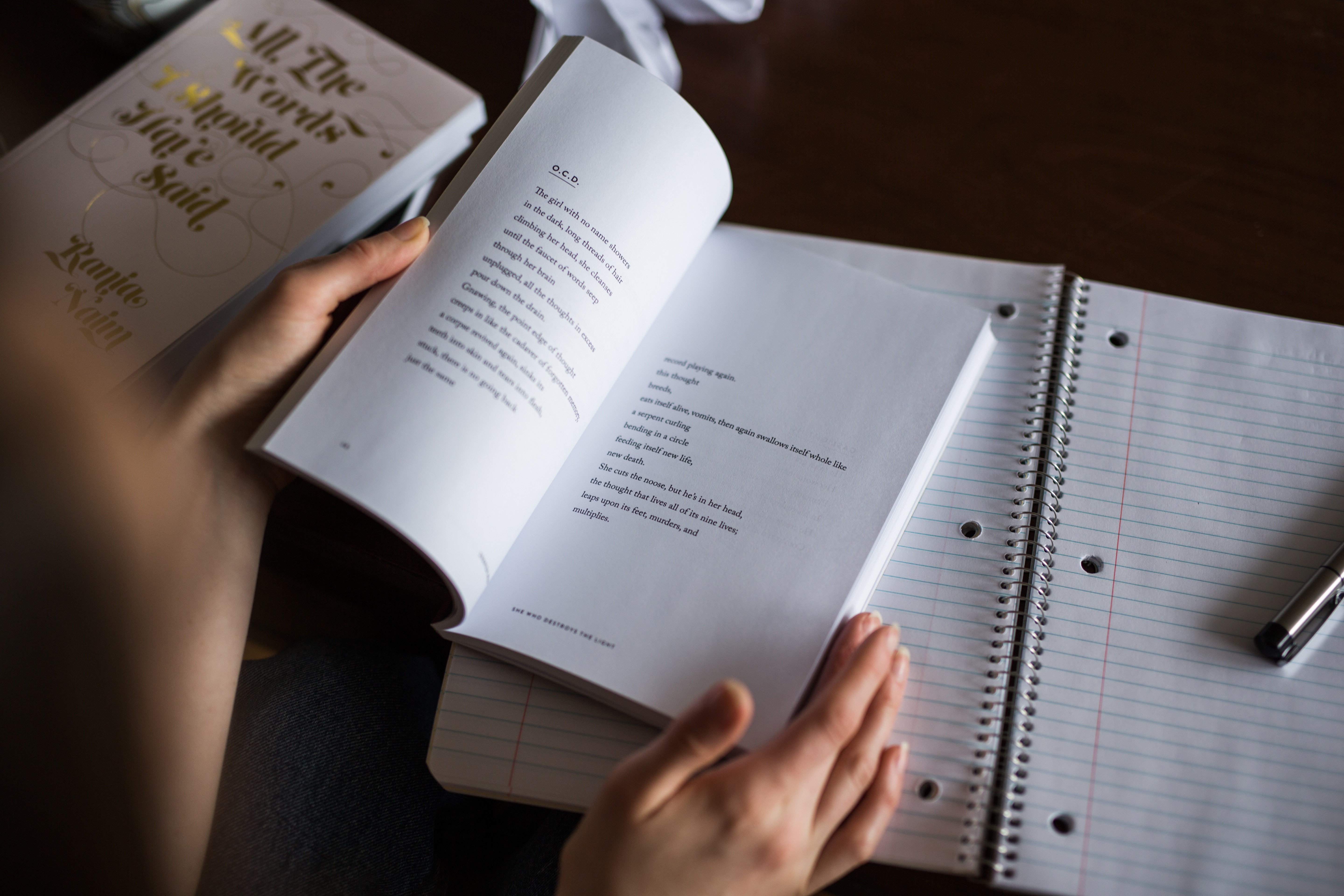
People have been writing poetry since written language was first developed, and they were telling poetic stories long before that. It’s no great surprise, then, that the form has accumulated many myths over the years, most of which are absolutely untrue. Let’s take a look at a number of the poetry reading and writing myths and explore fact versus fiction.

Poetry has to rhyme. Absolutely, completely untrue. According to dictionary.com, poetry is “the art of rhythmical composition, written or spoken, for exciting pleasure by beautiful, imaginative, or elevated thoughts.” Nowhere in that definition does it indicate that words need to sound alike to be a part of the form.
Many people associate poetry with rhyme for two reasons: 1) When we are children, we often learn short verses or songs that contain rhyming elements, as they are a way to learn the phonetics of language; rhyme is pleasing to the ear; and it is easier to remember rhyming words than those composed of disparate sounds. 2) Many, if not most, of the classical poetic forms have a rhyme scheme built in, and most of what we are exposed to in the middle and high school classrooms consists of classical works.
Free verse poetry, though, is not constrained by classical restrictions, and poets are free to use whichever words they choose to express an idea. Look at the opening of “Song of the Open Road,” one of the well-known works of the great American poet, Walt Whitman: “Afoot and light-hearted, I take to the open road, Healthy, free, the world before me, The long brown path before me, leading wherever I choose. Henceforth I ask not good-fortune—I myself am good fortune; Henceforth I whimper no more, postpone no more, need nothing, Strong and content, I travel the open road . . .” No rhyme here, yet it’s considered a great modern poem.

Poetry can only be written (or read) in the depths of despair or when you’re dizzily in love. While we do tend to remember best the poems that contain strong emotions, we can still write or read poems that do not and make them memorable. Consider the format of the Japanese haiku – it contains a mere 17 syllables and is most often noted for its references to nature. Or consider the following poem by Emily Dickenson, one of America’s most noted and prolific poets:
All Overgrown by Cunning Moss
All overgrown by cunning moss,
All interspersed with weed,
The little cage of “Currer Bell”
In quiet “Haworth” laid.
This Bird – observing others
When frosts too sharp became
Retire to other latitudes –
Quietly did the same –
But differed in returning –
Since Yorkshire hills are green –
Yet not in all the nests I meet –
Can Nightingale be seen – [1]
This poem is an observation, a reflection, a statement of what the poet has found true. There is no evidence that she felt any passion at the time of writing other than the passion of the beauty of life around her. Sometimes the seemingly ordinary poems are the ones that resonate most closely.

Poetry is for “academics” – it’s out of reach of the average person. No, no, and again, no! Poetry is a form of communication, and it works only when it can reach people. If you have to pore over the Webster’s Unabridged Dictionary and Roget’s Thesaurus just to understand the words (never mind the meaning of the piece), then the poet has not communicated her ideas effectively. That’s not to say that a poet can’t use large, difficult, or even archaic words if it suits her purpose to do so. However, the goal should be to engage the reader, not confuse him, so it’s beneficial to keep those to a minimum so that the poem’s theme is both understood and appreciated. The same goal should be kept in mind if you are the writer.
This is probably a good place to bring up the poetry we’re taught in school. While poets like Whitman and Dickenson are usually on the reading list, quite often instruction of their and others’ works are not aimed at the idea of ease of communication. Instead, we’re taught to always look for “hidden meanings,” obscure references, and the difficulty of the texts. In addition, instruction is often more of a cut-and-dried process of interpretation, whereas poetry is a living, breathing art form. In order to appreciate poetry, you have to experience poetry, not just look at the words on the page. Sound the words out loud, see how they fit together, see how they touch you and what truths they uncover within you. If you are able to do that, then you, whoever you are, will understand what poetry is really all about.
Poetry has to be a set length of words. Unless you’re working in a classical form that requires a certain number of syllables or lines (e.g. a 17-syllable haiku, a four-stanza quatern of eight-syllable lines, etc.), then your poem does not have to be any particular length. It can be a two-line couplet or a 100-page epic – the one requirement is it should be as long as it needs to be but only as long as it needs to be to tell your story, because, ultimately, a poem is a story told in a unique artistic form.
Want to uncover the truth behind many of poetry’s other common myths? Stay tuned for Part 2 of this blog post, right here on this website next week.
– Miriam Ruff, Content Creator, PoetsIN

Citation:
[1] From THE POEMS OF EMILY DICKINSON: READING EDITION, edited by Ralph W. Franklin, ed., Cambridge, Mass.: The Belknap Press of Harvard University Press, Copyright © 1998, 1999 by the President and Fellows of Harvard College. Retrieved from https://www.poetryfoundation.org/poems/52200/all-overgrown-by-cunning-moss-146

Miriam, your write reminds nicely that in our struggles with the pen our Life is the Poetry; we are the stumbling but receptive scribes; and the poem… is a record left behind, for a moment… ephemeral as water, or brittle as blood… or longer lasting and morphing like an insect or fermenting like wine. Thanks much for this read. Myths are integral to our make up as artists, but too as you suggest to our breaking free as individuals 🙂 MsH